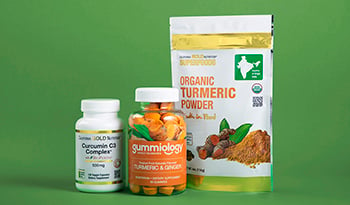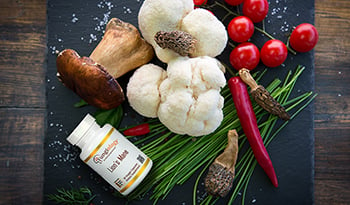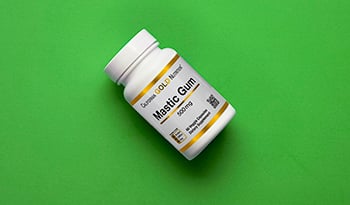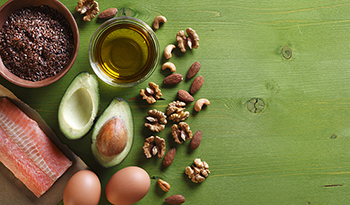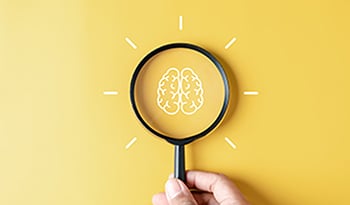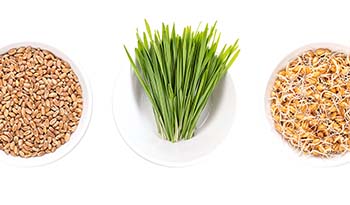Какво съдържа вашият мултивитамин? Ето 10 съставки, за които трябва да внимавате

Няма съмнение, че целият човешки организъм функционира най-добре, когато има постоянен достъп до висококачествена храна. Недостигът на което и да е хранително вещество има дълбоки последици за човешката система, тъй като организмът е сложна система, зависеща от правилното функциониране на много взаимозависими системи.
Висококачествената добавка с множество витамини и минерали трябва да осигурява 13-те витамина и 14-те минерала, които са необходими в подходящи количества всеки ден, за да могат тъканите и органите да вършат своята работа. Въпреки че са необходими само в сравнително малки количества, тези основни витамини и минерали са от решаващо значение за производството на телесни тъкани и за дейността на ензимите - молекули, участващи в ускоряването на химичните реакции, необходими за функционирането на човешкия организъм.
Кои са основните витамини и минерали?
Терминът "есенциални" означава, че тялото ни не може да произвежда тези съединения. Трябва да разчитаме на храна или на допълнителни източници.
Основните витамини и минерали са необходими за протичането на определени биохимични реакции или процеси в организма. Приемането на формула с множество витамини и минерали , която осигурява препоръчителната хранителна доза (ПДД) или препоръчителния хранителен прием (ПХП), може да послужи като застраховка, че приемът на тези основни хранителни вещества е достатъчен.
Витамини
- Широко известно е, че биотинът повишава здравината на ноктите и спомага за здрава коса. Освен това той участва в производството и използването на мазнини и аминокиселини.
- Холинът изпълнява жизненоважна функция в правилния метаболизъм на мазнините и аминокиселините. Холинът е необходим и за производството на важния невротрансмитер ацетилхолин и основните компоненти на клетъчните мембрани, като фосфатидилхолин (лецитин) и сфингомиелин.
- Ниацинът е една от основните молекули в човешкото тяло. Той участва в много клетъчни процеси, включително производството на енергия, клетъчното възстановяване, възстановяването на ДНК и оптимизирането на цялостната клетъчна функция.
- Пантотеновата киселина играе решаваща роля в оползотворяването на мазнините и въглехидратите в производството на енергия и в производството на хормони на надбъбречните жлези и червени кръвни телца.
- Рибофлавинът функционира в два жизненоважни ензима, участващи в производството на енергия.
- Тиаминът е от съществено значение за производството на енергия във всяка клетка на тялото, особено в сърцето и мозъка.
- Витамин А е необходим за правилното функциониране на зрението, дейността на имунната система, растежа и развитието, възпроизводството и целостта на кожата и лигавиците.
- Витамин В6 участва в образуването на протеини и структурни съединения, химически предаватели в нервната система, червени кръвни клетки, поддържане на хормоналния баланс и правилната имунна функция.
- Витамин В12 работи заедно с фолиевата киселина при синтеза на ДНК, червените кръвни клетки и миелиновата обвивка.
- Витамин С помага на тялото ни да произвежда колаген - основното белтъчно вещество на човешкото тяло. Той е от решаващо значение и за имунната функция.
- Витамин D стимулира усвояването на калция и е от решаващо значение за правилното функциониране на имунната система.
- Витамин Е функционира предимно като антиоксидант или защита срещу увреждане на клетъчните мембрани.
- Витамин К е известен с това, че произвежда факторите на кръвосъсирването и е необходим за изграждането на здрави кости и правилната функция на имунната система.
Минерали
- Калцият е най-разпространеният минерал в организма. Освен основната си функция да изгражда и поддържа костите и зъбите ни, калцият подпомага и много ензимни реакции в организма. Свиването на мускулите, освобождаването на невротрансмитери и регулирането на сърдечния ритъм зависят от калция.
- Хлоридът работи заедно с натрия и калия като електролит в баланса и разпределението на водата, киселинно-алкалното равновесие, мускулите и нервите, кръвното налягане, както и във функцията на сърцето, бъбреците и надбъбречните жлези.
- Хромът функционира в организма като жизненоважна съставка на "фактора на глюкозния толеранс". Хромът работи в тясно сътрудничество с инсулина, като улеснява усвояването на глюкозата в клетките, което го прави полезен за подпомагане на правилния глюкозен метаболизъм.
- Медта е необходима за правилното усвояване и използване на желязото. Медта е необходима и за омрежването на колагена и еластина, за да се осигури целостта на съединителната тъкан. Той е от решаващо значение и за адекватните нива на холестерола и имунната функция.
- Йодът е необходим за производството на хормоните на щитовидната жлеза.
- Желязото играе основна роля в молекулата на хемоглобина на червените кръвни клетки (ЧКК). Той пренася кислород от белите дробове към тъканите на тялото и въглероден диоксид от тъканите към белите дробове. Желязото също така участва в няколко ключови ензими в производството на енергия и метаболизма, включително в синтеза на ДНК.
- Магнезият активира много ензими в организма. Дефицитът на магнезий е широко разпространен. Симптомите на магнезиев дефицит включват умора, депресия, раздразнителност, слабост, сърдечни смущения, мускулни крампи, безсъние и предразположеност към стрес.
- Манганът помага за контрола на кръвната захар, енергийния метаболизъм и функцията на хормоните на щитовидната жлеза. Манганът също така е част от антиоксидантния ензим супероксиддисмутаза или СОД.
- Молибденът участва в детоксикацията на алкохола, образуването на пикочна киселина и метаболизма на сярата.
- Фосфорът работи с калция за укрепване на здравето на костите.
- Калият е електролит, който поддържа много телесни функции, включително водния баланс и разпределение, киселинно-алкалния баланс, мускулите и нервите, кръвното налягане, сърцето, бъбреците и функцията на надбъбречните жлези.
- Селенът работи с витамин Е за предотвратяване на увреждането на клетъчните мембрани от свободните радикали.
- Натрият функционира заедно с хлорида и калия като електролит във водния баланс и разпределението на водата, киселинно-алкалния баланс, мускулите и нервите, кръвното налягане, както и във функциите на сърцето, бъбреците и надбъбречните жлези.
- Цинкът е особено важен за правилното функциониране на имунната система, заздравяването на рани, сетивните функции, сексуалната функция и здравето на кожата.
10 съставки, които да избягвате в мултивитамините си
Много популярни мултивитамини, които се намират в аптеките или супермаркетите, са обявени за "препоръчани от лекари и фармацевти", но са с ниско съдържание на основни хранителни вещества и съдържат изкуствени добавки.
Ето няколко съставки, изброени на етикетите на някои от най-продаваните мултивитамини, които нямат никаква полезна причина да присъстват в хранителна добавка:
1. Синтетичен витамин Е
Синтетичният витамин Е (d,l-алфа-токоферол или -токоферил) е евтина неестествена форма, която може да попречи на използването на естествените d-алфа форми на витамин Е от организма.
2. Синтетичен бета-каротин
Синтетичният бета-каротин се различава значително по химичен състав от естествените източници на бета-каротин, например от водораслите Dunaliella.
3. BHT
Бутилираният хидрокситолуен или BHT е синтетичен антиоксидант, използван за предотвратяване на загубата на витамин Е и бета-каротин.
4. Царевично нишесте
Прежелатинизираното царевично нишесте от царевица, получена от ГМО, се използва като свързващо вещество, за да задържи таблетката заедно.
5. Хидрогенирано палмово масло
Хидрогенираното палмово масло е химически променена мазнина, използвана като смазочен агент. През 2015 г. Американската администрация по храните и лекарствата (FDA) определи, че този вид мазнини вече не са общопризнати като безопасни (GRAS), когато се използват в храни. По някаква причина обаче някои компании все още използват хидрогенирано палмово масло в таблетките за хранителни добавки.
6. Полиетилен гликол
Полиетиленгликолът е съединение на петролна основа, което се смесва с насипния материал преди таблетирането, за да може да тече по-добре в машините.
7. Станилов хлорид
Добавя се станиолов хлорид, за да се предотврати промяната на цвета на таблетката.
8. Талк
Талкът, да, точно така, талкът се използва за подобряване на потока на материала в процеса на таблетиране и за по-добро пресоване на съединенията в таблетката.
9. Титаниев диоксид
Титановият диоксид се използва за абсорбиране на влагата и/или за постигане на белота и непрозрачност на таблетката. Титаниевият диоксид е забранен в Европа, тъй като е доказано, че причинява токсични ефекти върху генетичния материал.
10. Жълто 6 езеро
Yellow 6 Lake е FD&C Yellow # 6 Aluminum Lake, изкуствен оцветител, използван за придаване на червеникаво-жълт оттенък на таблетката и без друга цел.
Как да изберем подходящия мултивитамин за вас
Посочените по-горе съставки са само някои от проблемите, които може да откриете при многобройните витаминни и минерални продукти. За щастие много качествени производители на хранителни добавки избягват да използват евтини съставки и помощни вещества. Ако видите на етикета съединение, за което не сте сигурни, потърсете го в iHerb или в друга предпочитана търсачка.
Друг проблем, на който е важно да се обърне внимание, са продуктите, които не отговарят на изискванията на етикета. Това е въпрос, който се е появявал многократно през годините. Като цяло утвърдените марки използват така наречените "добри производствени практики" или ДПП, за да се стремят да изпълнят твърденията на етикета. Проблемът почти винаги се проявява в компании без реално съдържание.
Търсете сертификати за качество
Когато търсите мултивитамин или каквато и да е друга добавка, потърсете сертификати за качество.
iHerb се занимава с контрола на качеството на хранителните добавки, като предлага продукти само от марки, които прилагат добри производствени практики. Много производители на хранителни добавки са сертифицирани и от организации със строги насоки като NSF® (National Science Foundation), USP® (United States Pharmacopeia), UL® (Underwriters Laboratories) и ISURA®.
iHerb прави още една стъпка напред в практикуването на прозрачност чрез програма за тестване, наречена iTested. Всеки продукт с логото iTested е бил:
- Тестван от сертифицирана независима лаборатория на трета страна за съставки, чистота и съответствие с етикета.
- Предлага пълна прозрачност чрез проверен доклад.
- Позволява осигуряване на качество, автентичност и гаранция на продукта.
ОТКАЗ ОТ ОТГОВОРНОСТ:Този УЕЛНЕС ХЪБ няма за цел да поставя диагнози...














































































 Съдържание
Съдържание



